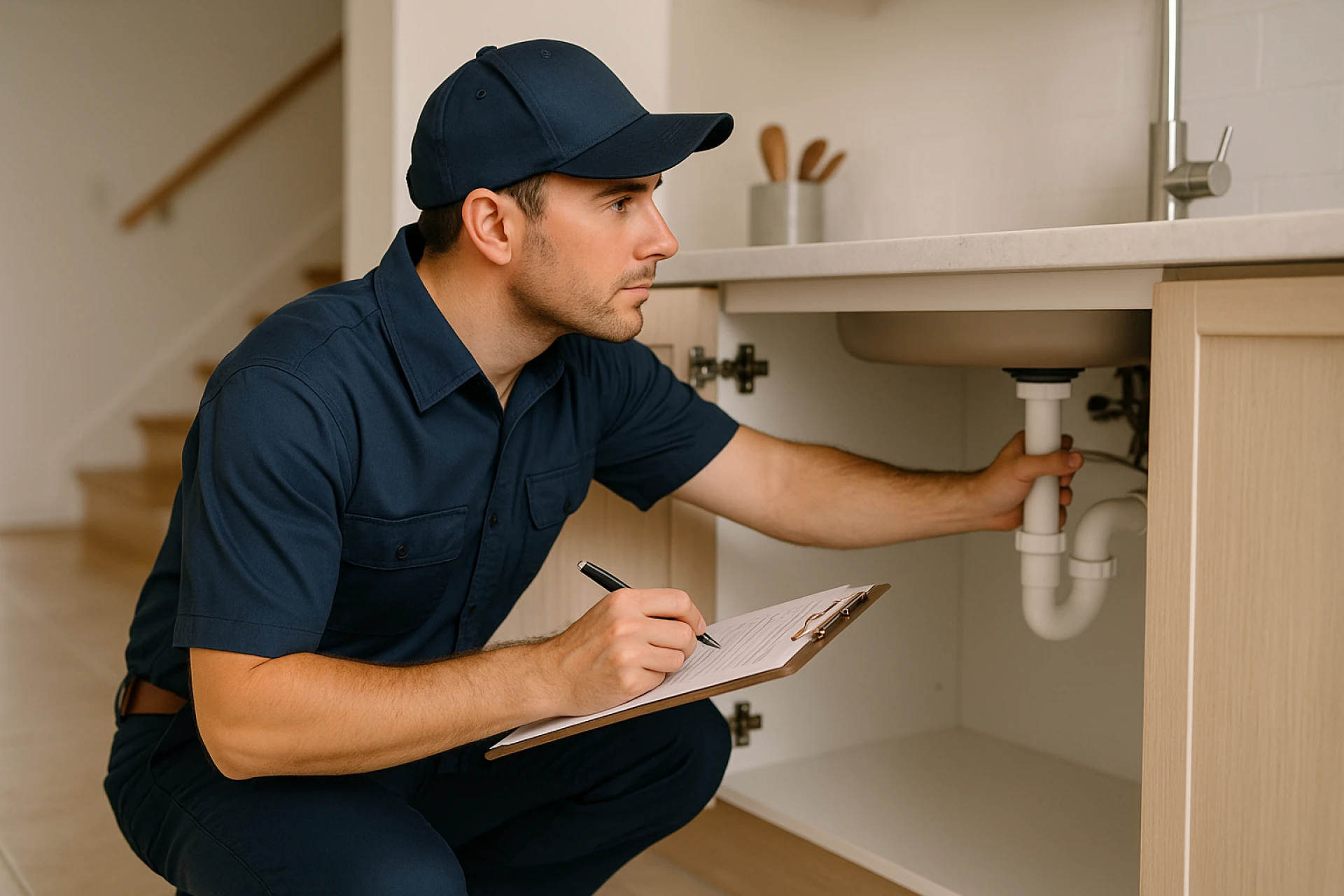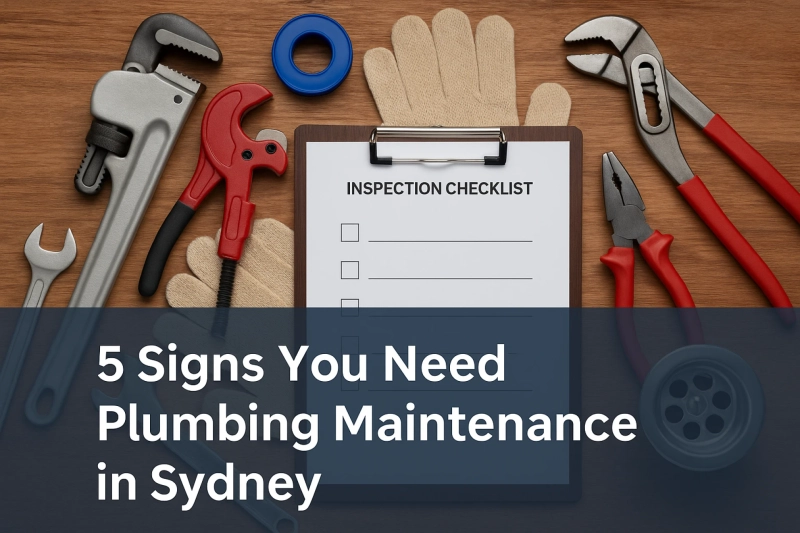Sydney’s homes are a patchwork of old Federation buildings, modern units, and everything in between — and that diversity comes with plumbing quirks. I learnt this quickly after moving into an older place in Newtown. Things worked fine at first, but small issues started cropping up — slow drains, odd pipe noises, and random pressure dips.
If you’ve noticed the same, it could be time to think seriously about plumbing maintenance Sydney. Spotting these early signs and addressing them through regular checks can prevent serious damage to your property. Below are five signs your home’s plumbing might be asking for help.
1. Water pressure that suddenly drops
It’s easy to dismiss a weak tap or underwhelming shower as a random blip. But low water pressure — especially if it shows up across multiple fixtures — could signal internal pipe blockages, corrosion, or even minor leaks.
Here’s what to watch for:
- Water is taking too long to fill the sink or tub
- Sudden drops in shower strength
- Uneven flow between hot and cold taps
- Pressure that fluctuates unpredictably
In many cases, these signs point to sediment build-up or aged pipes. A local plumber can assess whether the issue is inside your home or in the broader water system. Ignoring it for too long, though, may lead to larger repairs down the line.
2. Noisy pipes or strange plumbing sounds
Plumbing should be silent — or at least subtle. If you hear gurgling, banging, or whistling when you run water, that’s not just a quirk of an older house.
In one apartment I lived in at Surry Hills, the kitchen pipes would groan every time I ran the dishwasher. It turned out to be water hammer — a pressure surge that occurs when valves shut off too quickly. Over time, this can stress joints and loosen fittings.
This is where regulation matters. Homeowners are encouraged to rely on professionals who meet NSW safety standards and understand how to resolve issues according to licensed plumber regulations.
Even something as simple as a loose bracket can cause extensive vibration through the walls. So if your plumbing sounds like a drumline, it’s best not to tune it out.
3. Blocked drains that keep coming back
A slow-draining sink might seem harmless at first. But if you’ve had to “clear” the same drain more than once, you could be looking at a persistent blockage that store-bought chemicals won’t fix.
Here are signs the issue is deeper:
- Gurgling sounds from sinks or toilets
- Foul smells are coming from the drain
- Water is backing up when you flush or run the tap
- Blockages in multiple drains at once
I’ve seen this happen in a family home in the Hills District. Tree roots had found their way into the external drain — something no plunger or gel could clear. The owners only realised the scale of it when water started pooling on the back patio.
Understanding the red flags is step one. This blocked drains guide can help you identify whether you’re dealing with a surface issue or something deeper. Consistent blockages are rarely fixed by quick fixes.
4. Unexplained damp or mould patches
Sometimes, your plumbing issues aren’t visible at all — until your wall paint starts bubbling or a musty smell lingers for days. Internal leaks can travel behind walls, beneath flooring, and under cabinetry without showing immediate signs.
Here’s what to look out for:
- Discolouration on walls or ceilings
- Warped or softened floorboards
- A constant damp odour in one area
- Mould appearing without an obvious cause
In one project I shadowed in the Inner West, we discovered a pinhole leak beneath a second-floor ensuite. It had slowly saturated the ceiling of the room below, and only when the paint began flaking did the owners realise something was wrong.
Preventative plumbing checks not only help detect leaks, but they also ensure your systems are running cleanly and efficiently. And for homes aiming to lower their environmental footprint, modern solutions like greywater reuse and corrosion-resistant pipes are becoming more common. You’ll find more insights in this article on eco friendly plumbing solutions.
5. You've never had a maintenance check
This one’s easy to overlook. If you’ve lived in your home for a few years but never had a plumber take a look under the hood, it’s probably time.
Even without noticeable problems, plumbing systems age. Rubber seals harden, joints shift, and external factors like soil movement or root intrusion can impact your pipes over time.
Consider asking:
- When was the last full inspection done?
- Have all major connections (kitchen, laundry, bathrooms) been assessed?
- Do your fittings comply with modern efficiency standards?
Maintenance doesn’t mean fixing what’s broken — it’s about making sure nothing breaks in the first place.

How Sydney’s climate affects your plumbing
It’s not just time that wears down plumbing — climate plays a role too, especially in a city like Sydney.
Hot summers and cool winters can lead to expansion and contraction of pipes, which over time weakens fittings and causes leaks. Prolonged periods of heavy rainfall (which are increasingly common with changing weather patterns) can also saturate soil and place external pipes under pressure — particularly in clay-based regions like the North Shore or lower Blue Mountains.
Other climate-related challenges include:
- Salt-laden air in coastal suburbs is accelerating corrosion
- Bushfire-prone areas require flame-resistant fittings
- Longer dry spells cause soil shrinkage and joint stress
If your plumbing is exposed to extreme weather, periodic checks become even more important. While Sydney might not have the harshest conditions in the country, its microclimates can quietly impact plumbing performance, especially in older homes.
Final thoughts: Pay attention to what your plumbing is telling you
Your plumbing talks to you — just not in words. A sudden noise, a slow drain, a faint smell — these are signals worth listening to.
Being proactive about your home’s health starts with spotting the signs. If any of these feel familiar, now’s the time to explore plumbing maintenance sydney and get ahead of the next potential problem.



